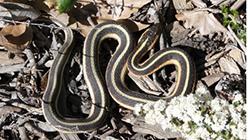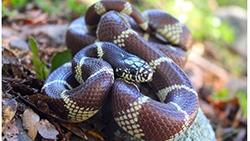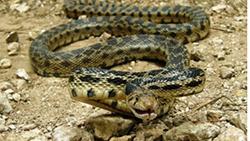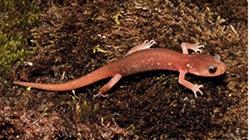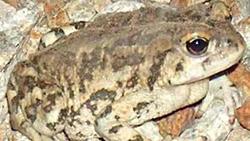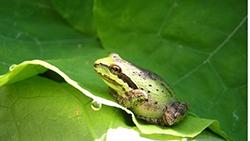Fall 2021
Invite Amphibians and Reptiles into the Garden? Absolutely!
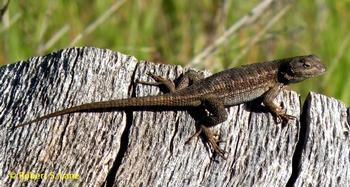
One note of caution: if you see amphibians or reptiles in your garden, look, but don’t touch. Some frogs and toads secrete poisonous chemicals as a defense against predators. These chemicals can make you sick if you handle them. Snakes in Marin County are safe – except for rattlesnakes.
Amphibians and reptiles - what's the difference?
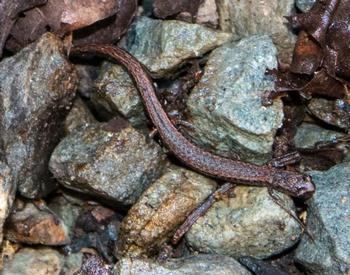
- There are over 35 species of frogs and toads on the West Coast. All toads are frogs, but not all frogs are toads. Frogs hop and toads walk. Frogs have smooth, slick skin, while toads have warty, bumpy skin. Both frogs and toads eat flies, mosquitos, ants, and slugs.
- Toads can change color to match their surroundings, and they have poison glands that provide further protection against predators. They hide during the day and emerge at dusk to eat mosquitos, insects, spiders, centipedes, millipedes, snails, and slugs. The average toad eats 50-100 insects every night.
- There are over 40 species of salamanders. They have smooth, slick skin and prey on beetles, mites, and woodlice.
- Newts are sometimes called lungless salamanders. They have dry, warty skin.
Reptiles include turtles, snakes, and lizards. Most live on land, breathe through lungs, and have dry scaly skin that prevents them from drying out.
- All 60 lizard species in California have dry, scaly skin, four legs, clawed feet, and long tails. They eat insects, predominantly ants, aphids, beetles, grasshoppers, wasps, and spiders. When threatened, lizards can detach their tails. The offloaded tail continues to wiggle, deflecting attention from predators. Most will regrow their tail over time.
- The vast majority of snakes that show up in the garden are entirely harmless to people and pets. They consume slugs, grubs, mice, voles, rats, and gophers.
Together, amphibians and reptiles are called herpetofauna, or “herps.” Herps are often called cold-blooded, meaning they regulate body heat by modifying interactions with their environment. For instance, turtles warm up by basking in the sun, and lizards regulate body temperature by shuttling, or moving in and out of cover.
What garden services do they provide?
Amphibians and reptiles play important roles in the garden as well as in the ecosystems where they live naturally.
- Herps are valuable indicators of environmental health. In particular, amphibians are indicators of wetland ecosystem health. They are vulnerable to drought and particularly sensitive to toxins and pollution because their permeable skin easily absorbs toxins.
- Some herps serve as predators that keep prey populations in check, like snakes that eat mice and rats. Reptiles also eat insects, spiders, and slugs. Amphibians eat many insect pests, including mosquitos.
- As prey, herpetofauna are an important part of the food chain. Amphibians are a food source for birds, fish, mammals, and reptiles. Reptiles are a food source for birds and mammals.
- Frogs are sometimes harvested for human consumption.
- A chorus of frog music is enjoyable on a warm summer evening!
Are amphibians and reptiles in trouble?
Many amphibian and reptile populations are threatened throughout the US. Habitat loss is the primary culprit, but there are also declines in untouched areas due to disease, UV radiation, and climate change. Populations have also declined from overcollection and unregulated hunting. In California, amphibian populations have declined due to loss of habitat, introduced species (like the American bullfrog), and pollutants.
How can you invite them into your garden?
To encourage amphibians and reptiles to visit your garden, create a healthy habitat for them.
- Protect and preserve surrounding natural habitat such as woodlands and wetlands.
- Grow native plants. Native plants are the best choice for attracting the insects that amphibians need.
- Replace your lawn. Lawns basically have zero habitat value.
- Provide cover. Don't be too quick to rake up fallen leaves. Build rock piles and brush piles of branches and twigs. This provides hiding places for snakes and toads. Placing logs in damp areas helps attract salamanders. Plant a variety of groundcovers and shrubs where they can take cover in and under foliage. Don't be too tidy.
- Add water. Both reptiles and amphibians need water to survive. Frogs and toads lay their eggs in standing water where there is also natural vegetation. If you don't have room for a pond, consider placing a birdbath or wide dish of water directly on the ground. Alternatively, you can use a galvanized tub. Plant native vegetation around it to provide shelter for tadpoles and small frogs.
- Build a "toad abode." Turn a ceramic flowerpot upside down and prop it up with a rock so a toad can enter and exit. Toads like to dig, so place it right on the soil. Place it in a shady spot under a plant and near water.
- Avoid pesticides. Pesticides kill or deform amphibians and reptiles and negatively affect their habitat and food sources. Rely on Integrated Pest Management strategies and use organic methods whenever possible.
- Avoid fertilizer. Fertilizer can run off into waterways where it may cause harm and even death to aquatic animals.
- Keep cats inside. Cats prey on amphibians and reptiles. You can keep these creatures (and your cat) safer if your kitty is not allowed to roam free outdoors.
- Keep predators away. Raccoons, crows, and other predators snack on reptiles and amphibians, so do what you can to keep them away. Avoid leaving pet food outside and keep trash cans tightly covered.
- Don't squish them. Be careful when lifting a pot or other item in your garden and placing it back down. Tiny reptiles and amphibians are easily crushed.
- Don't bring them home. Leave reptiles and amphibians alone when you find them in the wild. Many species are threatened, which is why there are regulations about capturing and transporting them.
- Don't release them into the wild. It's illegal and environmentally dangerous to release non-native reptiles and amphibians into your garden or the surrounding area. They compete for prey with native species, may carry diseases, and may even eat the local species.
Which reptiles and amphibians live in Marin?
Reptiles
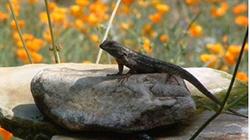
|
|
|
|
|
|
|
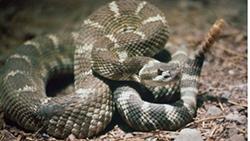
|

|
Amphibians
|
|
|
|
|
|
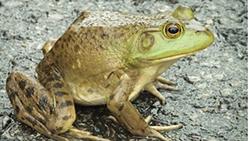
|

